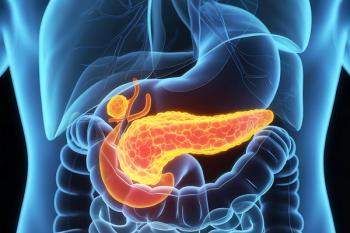
- LCGC Europe-04-01-2006
- Volume 19
- Issue 4
New Technologies
Sony has released details of its new e-book reader using E-Ink technology. This could transform the electronic reading experience. The lightweight reader could bring a whole new meaning to "book smart".
Sony has released details of its new e-book reader using E-Ink technology. This could transform the electronic reading experience. The lightweight reader could bring a whole new meaning to "book smart".
Coupling an innovative electronic paper display with precise one-handed navigation and a stylish, durable design, the Sony Reader will allow active readers to carry as much as they want to read whether they are travelling on the road or just around the corner.
Roughly the size of a paperback novel, but thinner than most (about 0.5 in.), the device can store hundreds of books in internal memory with the addition of an optional Memory Stick or Secure Digital (SD) flash memory card.
The reader can also store and display personal documents in Adobe PDF format, favourite web content and JPEG photos. With a seemingly limitless battery life equivalent to roughly 7500 page turns, avid readers can devour a dozen bestsellers plus War and Peace without ever having to recharge.
With the change to e-lab books this may be the way forward in replacing the conventional paper lab book for displaying data results. "In recent years millions of people have become comfortable downloading and enjoying digital media, including e-books. But until now, there has not been a good device on which to read," said Ron Hawkins, senior vice president of Personal Reader Systems marketing at Sony Electronics. "Our research has shown that people are looking for a device designed exclusively for immersive reading. The Sony Reader with its electronic paper display, thin format and extraordinary battery life fits the bill."
Part of the magic behind the reader's viewing experience is the high-resolution electronic paper display technology, which delivers a realistic print look that rivals traditional paper. The result is readable text and graphics from a variety of viewing angles, even outdoors in bright sunlight. Since there is no backlight, readers will not experience the fatigue associated with long-term reading on an LCD. And, as the technology renders each page as a static image, there is no flicker or constant screen refresh to add to eyestrain.
Users with impaired or limited eyesight will enjoy the reader's fully adjustable text size, which can be magnified or reduced on demand.
E-Ink technology is claimed to be a significant improvement over CRT and LCD technology. Instead of rows of glowing cells E-Ink microcapsules actually appear as either black or white depending on a positive or negative charge determined by the content. The result is similar to paper: high contrast, high resolution, viewable in direct sunlight and at an angle approaching 180°
For more information, visit
Articles in this issue
over 19 years ago
Chromatography Forum — Use the Braintrustover 19 years ago
Profiles in Practice Series: A Revolution in Clinical Chemistryover 19 years ago
The Flame Ionization Detectorover 19 years ago
ExTech and HTC-9over 19 years ago
Interpretation of Isotope Peaks in Small Molecule LC?MSover 19 years ago
Top marks for NMR processorNewsletter
Join the global community of analytical scientists who trust LCGC for insights on the latest techniques, trends, and expert solutions in chromatography.





